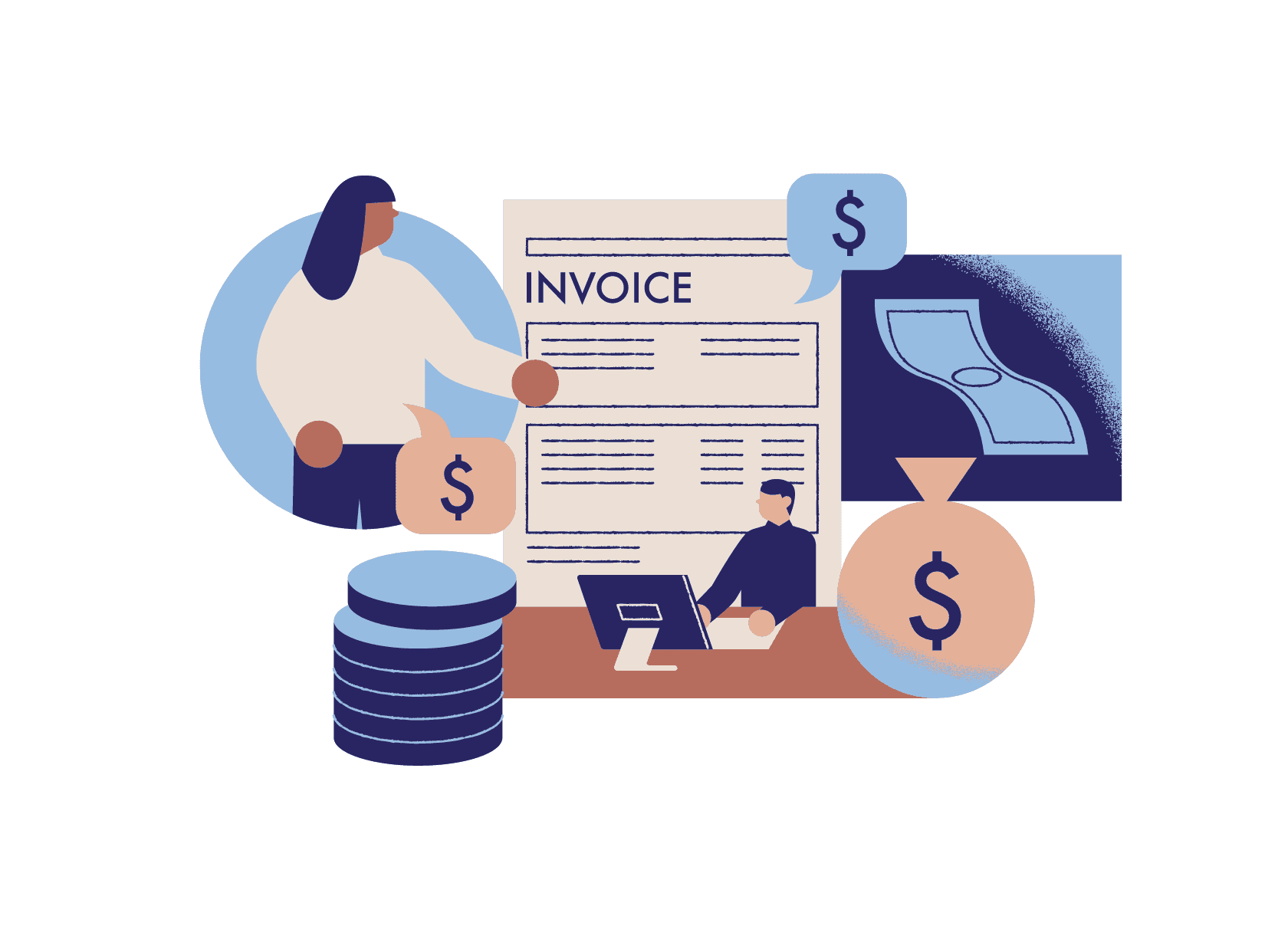
Invoice management is the process businesses use to handle the invoices they receive.
There are two ways to manage invoices: the traditional way and the modern way. With the traditional method, everything is done by hand, like entering data into spreadsheets.
This can be slow, and mistakes happen more often.
The modern approach uses software to automate the process, which speeds things up, reduces errors, and makes it easier to manage lots of invoices at once.
Automating invoice management can save time, cut costs, and give businesses a clearer view of their finances.
The Importance of Invoice Management
Good invoice management is important for keeping a business financially healthy.
Paying invoices on time keeps things running smoothly, reduce the risk of incurring late fees and allow you to take advantage of early payment discounts.
Over time, these savings can have a noticeable impact on your bottom line.
On the flip side, poor invoice management can lead to different problems.
If invoices aren’t paid on time, it can strain your relationships with suppliers. They might start to see your business as unreliable and might stop doing business with you.
Mistakes in handling invoices, like paying the wrong amount, can cause financial discrepancies that are hard to untangle later.
The Invoice Management Process
Receiving Invoices
One of the first steps in managing invoices is receiving them, and there are a few different ways this can happen.
Traditionally, invoices would come in through the mail as paper documents. This method is becoming less common as more efficient options become available.
Today, many invoices arrive via email as PDF attachments.
Validating Invoices
Once you’ve received an invoice, the next step is to validate it.
This step is about making sure the invoice is accurate before any payment is made.
One common method used for this is called three-way matching.
This involves comparing three key documents: the invoice, the purchase order (PO), and the receipt.
The idea is to ensure that what was ordered matches what was received.
For example, if your company ordered 100 units of a product, the PO should show that order, the receipt should confirm that 100 units were delivered, and the invoice should bill you for those 100 units.
If any of these documents don’t match up, it’s a sign that something might be wrong.
Accuracy in this validation process is critical.
Approving Invoices
After an invoice has been validated, the next step is to get it approved.
In a manual workflow, this means passing the invoice from one person to another. Each person in the approval chain needs to review the invoice, check for any issues, and then give their approval. This process can be slow, especially if multiple people need to approve the invoice.
On the other hand, with automated workflows, invoices are routed to the appropriate approvers automatically, and each person can approve the invoice with just a click.
By automating the invoice approval process, businesses can improve efficiency, reduce errors, and ensure that payments are made on time.
Payment Processing
Once an invoice is approved, it’s time to make the payment.
There are several ways to handle payments, and the method chosen can depend on the supplier’s preferences.
The most common ones are bank transfers, online payment platforms like Stripe, and traditional checks.
Automating the payment process has several benefits.
Payments can be automated. They can be scheduled to go out at the right time, ensuring that suppliers are paid on time. This will help avoid late payments, which can lead to late fees.
Automation also reduces the chances of errors, such as paying the wrong amount.
Challenges in Invoice Management
A common challenge in invoice management is dealing with manual data entry.
When invoices are processed manually, mistakes can be made, numbers can be mistyped, or details might be missed.
These errors can lead to problems, like paying the wrong amount.
Some tools can help reduce errors, one of which is invoiceocr.io.
This tool utilizes OCR scanning to extract data from invoices. The data is then provided in a CSV file, which makes it easy to upload it into your accounting system.
By using a solution like this, you can significantly lower the chances of errors.
Another common issue is late payments.
When invoices are delayed, it can lead to late fees. This can affect the company’s financial health and damage the relationships with suppliers.
Best Practices for Efficient Invoice Management
Adopting Automation
One of the most effective ways to improve invoice management is by adopting automation. Automating your invoice processes can save your business a lot of time and reduce the risk of errors that often come with manual data entry.
By adopting automation, your business can make invoice management faster, more accurate, and much less stressful.
Standardizing Processes
Standardizing your invoicing process is important to ensure that everyone in your organization follows the same procedures.
When the process is standardized, it’s easier to train new staff, maintain clear records, and handle all invoices in the same way.
To create a standardized invoicing process, start by creating workflows. Here are some tips:
- Use Consistent Invoice Templates: design an invoice template that includes all necessary information, such as invoice number, date, payment terms, and detailed descriptions.
- Define Approval Workflows: establish a standard approval process that outlines who needs to approve each invoice. This will help ensure that invoices move smoothly through the necessary steps without unnecessary delays.
- Document Procedures: create a guide that outlines each step of the invoicing process. This should include how to handle exceptions, such as disputed invoices so that everyone knows how to proceed in unusual situations.
Having Good Relationships with Suppliers
Paying your suppliers on time is key to building strong relationships with them.
When payments are made promptly, suppliers are more likely to see your business as trustworthy.
This can give you access to discounts for early payment.
Good communication with your suppliers is crucial for keeping these relationships healthy. Here are some best practices to consider:
- Regular Updates: keep your suppliers informed about the status of their payments. If there are any delays, let them know in advance.
- Express Appreciation: don’t underestimate the power of a simple thank you. Regularly acknowledging your suppliers for their service can strengthen the relationship.
Choosing the Right Invoice Management Software
When selecting invoice management software, focus on features that will meet your business needs. Here are some to look for:
- Integration with Existing Systems: your invoice management software should easily integrate with your current accounting. This ensures that data flows easily between platforms, reducing the need for manual data entry.
- Ease of Use: the software should be user-friendly. An intuitive interface can save time and reduce mistakes. Look for software that has a straightforward setup process, so your staff can focus on getting their work done rather than figuring out how to use the system.
- Scalability: as your business grows, your invoice management needs will likely become more complex. Choose software that can scale with your business. This will allow you to continue using the same platform as your business expands.
To find the right invoice management software for your business, start by considering its size. Smaller businesses might need a more basic solution that covers the essentials, while larger companies with more complex operations might require advanced features.
Here’s how to evaluate your options:
- Small Businesses: if you run a small business, look for software that is easy to use, with straightforward features like basic invoice generation, simple approval workflows, and direct integration with popular accounting platforms like QuickBooks.
- Medium to Large Businesses: for larger companies, consider software that offers advanced functionality, such as customizable approval workflows, robust reporting tools, and the ability to handle multiple currencies. Ensure that the software can integrate with more complex systems and support scalability as your business continues to grow.
Conclusion
Efficient invoice management is critical to any business.
By adopting automation, standardizing processes, and choosing the right software, businesses can reduce errors, save time, and improve overall financial health.
Now is a good time to take a close look at how your current invoice management system is working. Are there areas where things could be more efficient? Are manual tasks taking up too much time?
If so, it might be worth considering some upgrades. Don’t hesitate to explore how modern solutions can help your business run more smoothly.
